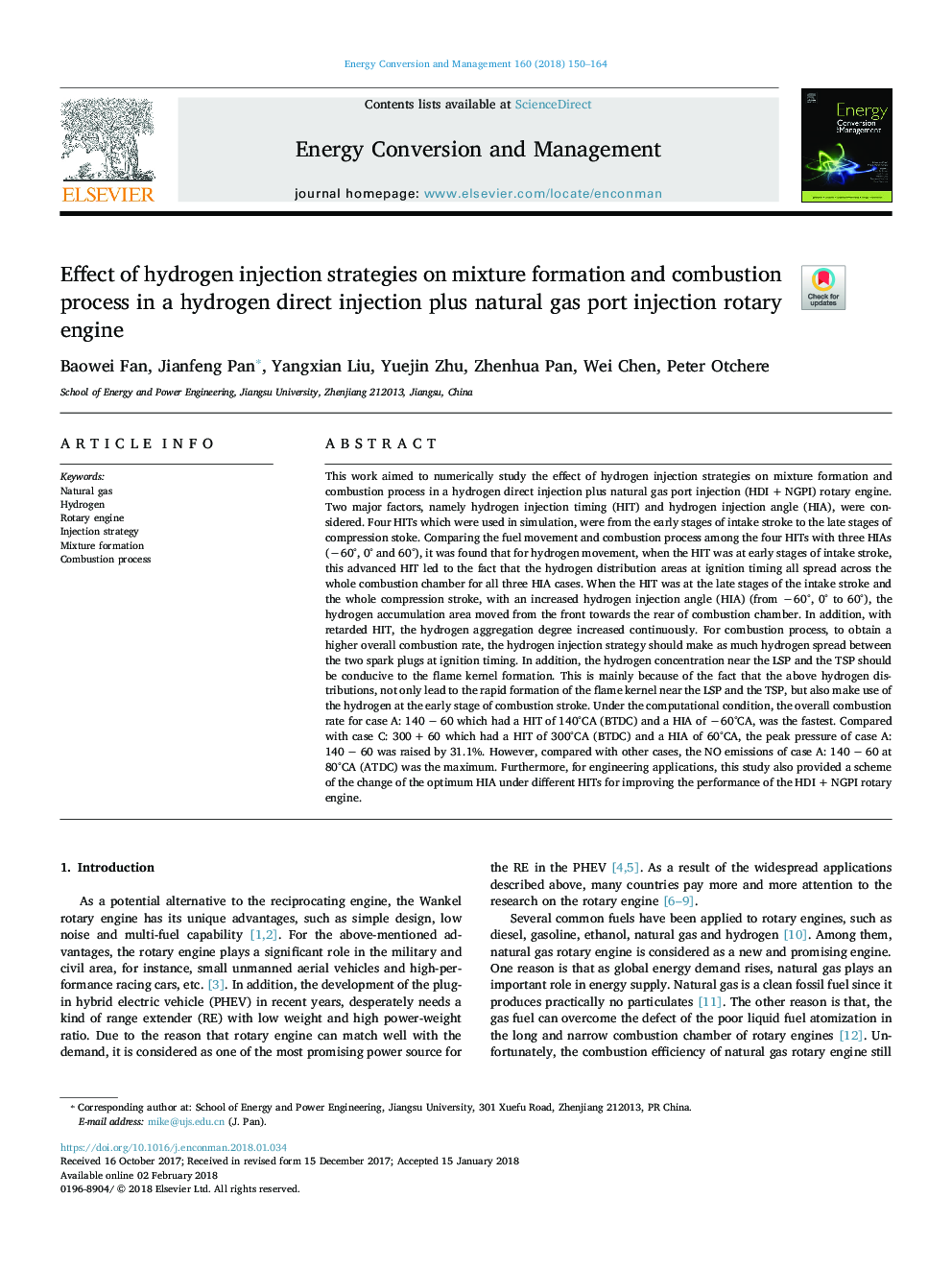| کد مقاله | کد نشریه | سال انتشار | مقاله انگلیسی | نسخه تمام متن |
|---|---|---|---|---|
| 7158964 | 1462802 | 2018 | 15 صفحه PDF | دانلود رایگان |
عنوان انگلیسی مقاله ISI
Effect of hydrogen injection strategies on mixture formation and combustion process in a hydrogen direct injection plus natural gas port injection rotary engine
ترجمه فارسی عنوان
تاثیر استراتژی های تزریق هیدروژن بر تشکیل مخلوط و فرایند احتراق در یک تزریق مستقیم هیدروژن به همراه موتور دیزلی تزریق پورت طبیعی
دانلود مقاله + سفارش ترجمه
دانلود مقاله ISI انگلیسی
رایگان برای ایرانیان
کلمات کلیدی
گاز طبیعی، هیدروژن، موتور روتاری استراتژی تزریق، شکل گیری مخلوط، فرآیند احتراق
موضوعات مرتبط
مهندسی و علوم پایه
مهندسی انرژی
انرژی (عمومی)
چکیده انگلیسی
This work aimed to numerically study the effect of hydrogen injection strategies on mixture formation and combustion process in a hydrogen direct injection plus natural gas port injection (HDIâ¯+â¯NGPI) rotary engine. Two major factors, namely hydrogen injection timing (HIT) and hydrogen injection angle (HIA), were considered. Four HITs which were used in simulation, were from the early stages of intake stroke to the late stages of compression stoke. Comparing the fuel movement and combustion process among the four HITs with three HIAs (â60°, 0° and 60°), it was found that for hydrogen movement, when the HIT was at early stages of intake stroke, this advanced HIT led to the fact that the hydrogen distribution areas at ignition timing all spread across the whole combustion chamber for all three HIA cases. When the HIT was at the late stages of the intake stroke and the whole compression stroke, with an increased hydrogen injection angle (HIA) (from â60°, 0° to 60°), the hydrogen accumulation area moved from the front towards the rear of combustion chamber. In addition, with retarded HIT, the hydrogen aggregation degree increased continuously. For combustion process, to obtain a higher overall combustion rate, the hydrogen injection strategy should make as much hydrogen spread between the two spark plugs at ignition timing. In addition, the hydrogen concentration near the LSP and the TSP should be conducive to the flame kernel formation. This is mainly because of the fact that the above hydrogen distributions, not only lead to the rapid formation of the flame kernel near the LSP and the TSP, but also make use of the hydrogen at the early stage of combustion stroke. Under the computational condition, the overall combustion rate for case A: 140â¯ââ¯60 which had a HIT of 140°CA (BTDC) and a HIA of â60°CA, was the fastest. Compared with case C: 300â¯+â¯60 which had a HIT of 300°CA (BTDC) and a HIA of 60°CA, the peak pressure of case A: 140â¯ââ¯60 was raised by 31.1%. However, compared with other cases, the NO emissions of case A: 140â¯ââ¯60 at 80°CA (ATDC) was the maximum. Furthermore, for engineering applications, this study also provided a scheme of the change of the optimum HIA under different HITs for improving the performance of the HDIâ¯+â¯NGPI rotary engine.
ناشر
Database: Elsevier - ScienceDirect (ساینس دایرکت)
Journal: Energy Conversion and Management - Volume 160, 15 March 2018, Pages 150-164
Journal: Energy Conversion and Management - Volume 160, 15 March 2018, Pages 150-164
نویسندگان
Baowei Fan, Jianfeng Pan, Yangxian Liu, Yuejin Zhu, Zhenhua Pan, Wei Chen, Peter Otchere,
